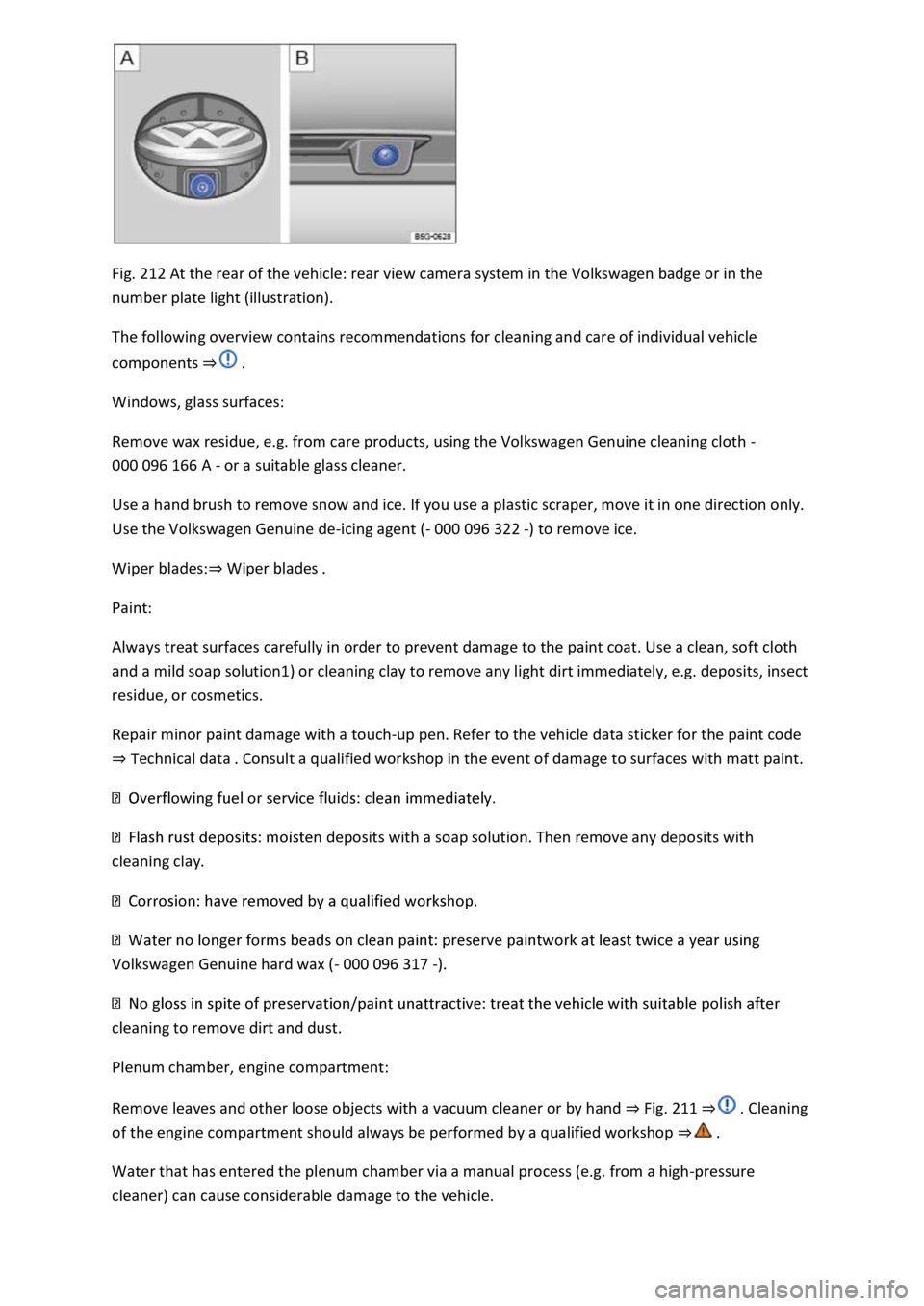Page 394 of 502

synchronise the Tyre Pressure Loss Indicator Tyre Pressure Loss Indicator
flashes for 65 seconds and then remains lit continuously
Do not drive on!
-synchronise the Tyre Pressure Loss Indicator Tyre Pressure Loss Indicator
WARNING
Differing tyre pressures or tyre pressures that are too low can cause tyre damage, tyre failure, loss of
vehicle control, accidents, serious injury and death.
lights up, stop the vehicle as soon as possible and check all the tyres
Useful information about wheels and tyres
vehicle stability and increase the braking distance.
lead
to a tyre bursting and the loss of control over the vehicle.
recommended tyre pressure can be found on a sticker Tyre pressure
em cannot function correctly unless all cold tyres have the correct tyre
pressure.
Tyre pressure
Tyre pressure
warm up the tyre to such an extent that the tread may separate and the tyre could burst. This could
cause the driver to lose control of the vehicle.
the tyre bursts, leading you to lose control of the vehicle.
rely and the vehicle will not
handle well.
to the nearest qualified workshop and check and correct the tyre pressure Useful information
about wheels and tyres
Page 395 of 502

Tyre Pressure Loss Indicator. In the event of a malfunction, the indicator lamp will flash for 65
seconds and then light up continuously. However, the indicator lamp will go out when the road
conditions or driving style change.
Useful information about wheels and tyres
Introduction
This chapter contains information on the followingsubjects:
Handling wheels and tyres
Wheel rims and wheel bolts
Tyre pressure
Tread depth and wear indicators
Tyre damage
Spare wheel or temporary spare wheel
Tyre lettering and tyre type
Maximum load and speed range for tyres
Winter tyres
Snow chains
The tyres are the most heavily loaded and most underestimated parts of a vehicle. Tyres are very
important as the narrow tyre contact surfaces are the only contact between the vehicle and the
road.
The service life of tyres is dependent on tyre pressure, driving style, handling and correct fitting.
WARNING
New tyres or tyres which are old, worn down or damaged cannot provide full vehicle control and
braking efficiency.
injuries.
s must be fitted with radial tyres of the same type, size (rolling circumference) and
the same tread pattern.
particularly carefully for the first 600 km in order to prevent accidents and serious injury.
the tyre pressure is too low, it is possible that the tyre temperature will increase to such an extent
when driving that the tread peels off and the tyre bursts.
Page 418 of 502
Manual gearbox: select a gear.
Ask all vehicle occupants to leave the vehicle and stand at a safe distance away from moving traffic.
Switch on the hazard warning lights and set up the warning triangle In an emergency. Observe any
legal requirements.
Chock the wheel diagonally opposite the wheel being worked on with a stone, collapsible chocks or
another suitable object.
When towing a trailer: unhitch the trailer from the vehicle and park it properly .
Remove any items of luggage from the luggage compartment.
Remove the spare wheel or temporary spare wheel and the vehicle toolkit from the luggage
compartment.
Remove the hubcaps Hubcaps.
WARNING
Ignoring any of the items on this important safety checklist can lead to accidents and severe injuries.
Wheel bolts
Page 424 of 502

theft wheel bolt using the adapter at position Fig.
0
l the other wheel bolts in clockwise direction and tighten them slightly.
tighten the bolts in order but always in diagonally opposite sequence.
Hubcaps
WARNING
Incorrect tightening torque or incorrect use of wheel bolts can lead to a loss of control of the vehicle,
and cause accidents and serious injuries.
ep all wheel bolts and threads in the wheel hubs clean and free from oil and grease. The
wheel bolts must be easy to turn and be tightened to the specified torque.
not use
for loosening or tightening them.
After changing a wheel
First read and observe the introductoryinformation and safety warnings
luggage compartment Vehicle toolkit
Tightening torque of wheel
bolts
as possible.
After changing a wheel, the indicator lamp for the tyre monitoring system may indicate a fault in the
system T
Breakdown set
Introduction
This chapter contains information on the followingsubjects:
Contents of the breakdown set
Preparations
Sealing and inflating tyres
Page 438 of 502

ARNING
Care products may be toxic and hazardous. Unsuitable care products and incorrect application of
care products can cause accidents, severe injuries, burns or poisoning.
facturer's instructions.
-ventilated rooms so that you do not breathe in any toxic
vapours.
e fluids for vehicle care.
These substances are toxic and highly inflammable.
NOTICE
Soiling with aggressive and solvent-based ingredients can cause irreparable damage to the vehicle
equipment, even if left for only a short time, e.g. on seat padding or trim parts.
1) Suitable accessories are available from your Volkswagen dealership. Follow the application
instructions on the packaging.
Washing the vehicle
Thoroughly wash the underside of the vehicle on a regular basis to remove road salt or sea water
residue.
Automatic car washes
Always observe all the car wash operator's specifications, particularly if your vehicle has add-on
parts
ar washes without brushes.
Information on
Operating the wiper leverand the rain/light sensor before using
the car wash.
High-pressure cleaner
Page 439 of 502

pressure cleaner. Never use rotating nozzles
-pressure cleaner.
cm away from the side windows and
other vehicle components.
yres,
rubber hoses, insulation materials or any other sensitive components, e.g. door locks.
brief periods of time.
Hand wash
As a rule, a hand wash is a gentle method to clean your vehicle. However, there are also some things
to note for this
g brush using only light pressure.
Start with the roof and work from the top to the bottom.
Use a shampoo for very stubborn dirt only.
Waxing
Waxing protects the paintwork. At the latest when water no longer clearly forms small drops and
runs off the paintwork when the vehicle is clean, reapply the protection to the vehicle using a quality
preservative wax.
Even if a preservative wax is applied regularly in the automatic car wash, Volkswagen recommends
protecting the vehicle paintwork at least twice a year using Volkswagen Genuine hard wax (-
000 096 317 -).
Polishing
Polishing is only necessary if the paint has lost its shine, and the gloss cannot be brought back by
applying wax.
Matt-painted vehicle parts must not be polished in order to avoid producing a shine
WARNING
Page 440 of 502
be
increased as the brake discs and pads will be wet, or possibly iced up in winter.
-ice the brakes by performing careful braking manoeuvres. Do not endanger any other
road users when doing this.
NOTICE
Serious vehicle damage can be caused if the vehicle is not washed correctly.
could freeze up.
NOTICE
Painted parts and surfaces with a matt finish, unpainted plastic parts, headlight lenses and tail light
clusters can be damaged if the vehicle is not washed correctly.
-painted vehicle only in a textile car wash.
-painted surfaces with hot wax.
-painted surfaces.
Wash the vehicle only in specially designated washing areas. This prevents any waste water
contaminated with oil from entering the sewerage system.
Caring for and cleaning the vehicle exterior
Fig. 211 Between the engine compartment and the windscreen: plenum chamber (illustration).
Page 441 of 502

Fig. 212 At the rear of the vehicle: rear view camera system in the Volkswagen badge or in the
number plate light (illustration).
The following overview contains recommendations for cleaning and care of individual vehicle
components
Windows, glass surfaces:
Remove wax residue, e.g. from care products, using the Volkswagen Genuine cleaning cloth -
000 096 166 A - or a suitable glass cleaner.
Use a hand brush to remove snow and ice. If you use a plastic scraper, move it in one direction only.
Use the Volkswagen Genuine de-icing agent (- 000 096 322 -) to remove ice.
Wiper blades:Wiper blades
Paint:
Always treat surfaces carefully in order to prevent damage to the paint coat. Use a clean, soft cloth
and a mild soap solution1) or cleaning clay to remove any light dirt immediately, e.g. deposits, insect
residue, or cosmetics.
Repair minor paint damage with a touch-up pen. Refer to the vehicle data sticker for the paint code
Technical data
n deposits with a soap solution. Then remove any deposits with
cleaning clay.
Volkswagen Genuine hard wax (- 000 096 317 -).
cleaning to remove dirt and dust.
Plenum chamber, engine compartment:
Remove leaves and other loose objects with a vacuum cleaner or by hand Fig. 211
of the engine compartment should always be performed by a qualified workshop
Water that has entered the plenum chamber via a manual process (e.g. from a high-pressure
cleaner) can cause considerable damage to the vehicle.